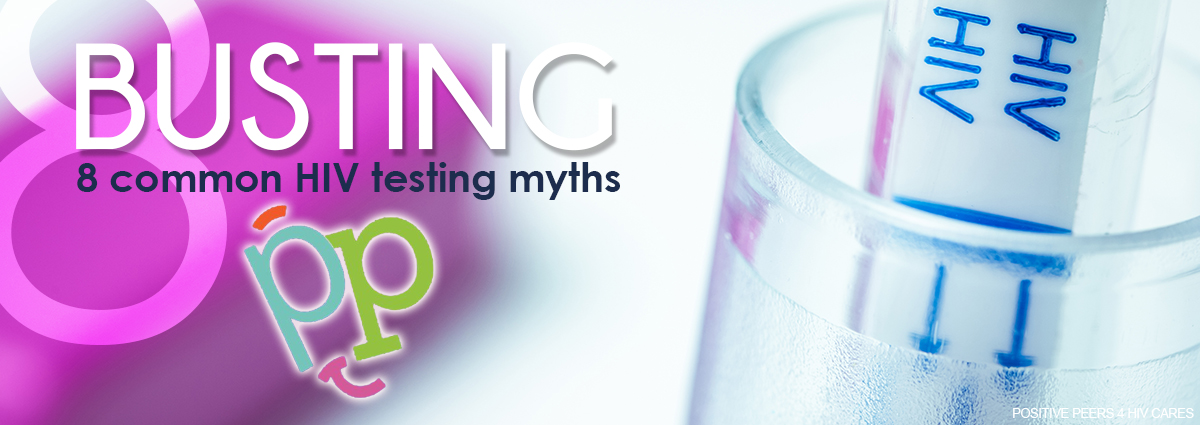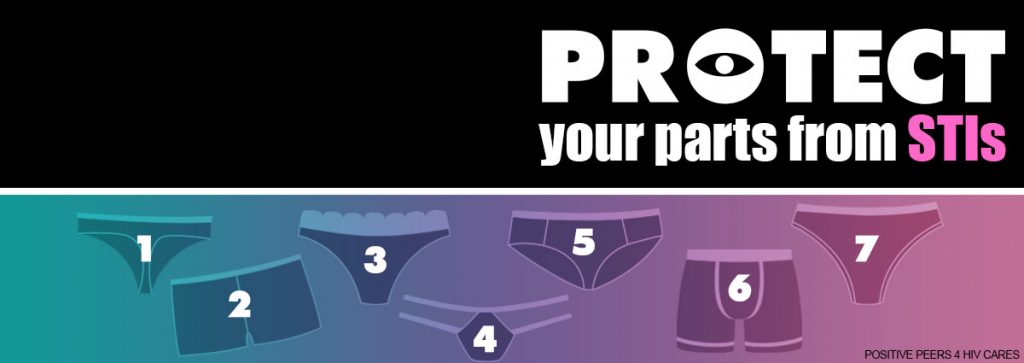
By: Ann K. Avery, MD, Infectious Disease Physician at MetroHealth Medical Center
We all love sex — it’s fun to get down with bae, even if they’re only for tonight. If you’re having sex on the reg though, there’s a 50/50 chance you’ll pick up some kind of sexually transmitted infection (STI) by the time you’re 25. And if you’re living with HIV, it’s important to pay extra attention to STIs because they can make it tougher for you to stay undetectable.
This isn’t meant to scare you — it’s just a fact we all should know. STIs are a medical problem first and foremost and shouldn’t be something to be embarrassed about. You might want to consider getting tested every three to six months, regardless of whether or not you think you have symptoms. Then, if you test positive, you can get treatment right away.
End of story, right?
If only. Some people with STIs feel shamed and stigmatized — mainly because of ignorance and intolerance. As far as we’re concerned, an STI is a treatable medical condition caused by an accident — just like breaking your arm in a car wreck. It’s nothing to be ashamed of, so you don’t have to put up with people giving you a hard time if you have an STI.
With that said, STIs are no fun, so today we’re sharing quick summaries of seven common STIs (there are more than two dozen altogether), broken down by cause: viruses, bacteria, and parasites.
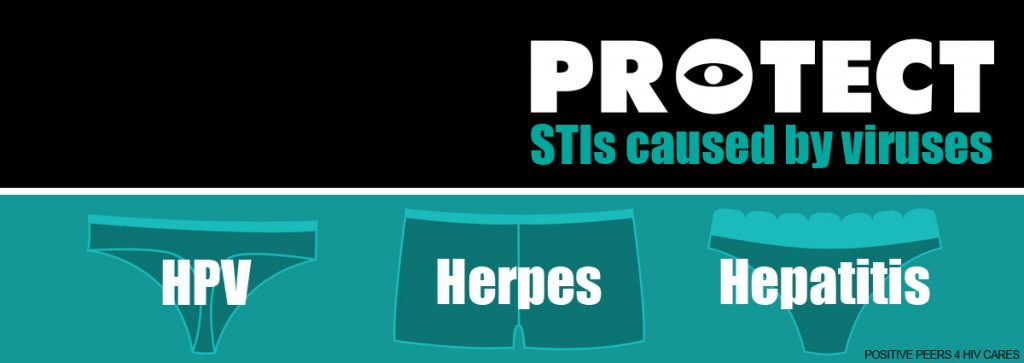
STIs caused by viruses
Viruses are the toughest STIs to cure (which you know only too well if you have HIV). Here’s a look at three:
Human papillomavirus (HPV)
This is one of the most common forms of STI. The Centers for Disease Control and Prevention (CDC) say just about all adults will be exposed to the virus during their lifetimes. HPV has been linked to cancers of the throat, anus, penis, cervix, and vulva, so it can be a serious health threat.
What causes it: Approximately 150 varieties of the human papillomavirus.
How you get it: Just about any kind of sexual contact, usually with the penis, anus, mouth, or vagina.
Symptoms: Genital warts are the most common, though many people never know they have HPV as the most common symptom is no symptom at all.
Treatment: Vaccines can prevent HPV. They’re recommended during childhood and young adulthood.
Oral (HSV-1) and genital herpes (HSV-2)
Herpes is an incurable viral STI that anybody can get. Many people who have it are unaware they are infected because you can go months or even years without an outbreak. You can transmit it even if you have no signs of the disease. Outbreaks are usually most severe during the first year of an infection.
What causes it: Herpes simplex virus type 1 (HSV-1) or type 2 (HSV-2)
How you get it: Contact with the skin, saliva, or herpes sores of an infected partner.
Symptoms: Genital, rectal, or oral blisters. Some are easy to mistake for a pimple or ingrown hair. Infections may cause milder symptoms or no symptoms at all.
Treatment: Anti-herpes medicines can treat an outbreak, and if taken daily, it can reduce the chance of infecting your partner. There’s no cure for herpes.
Hepatitis
Hepatitis is a liver inflammation that can have life-threatening consequences because the liver removes toxins from the bloodstream. Hepatitis isn’t always an STI, but the varieties that do come from sexual contact can be serious health threats.
What causes it: Viral hepatitis is the greatest concern for people with HIV. It comes in five main varieties: hepatitis A, B, C, D, and E (often called hep-A, hep-B, etc.).
How you get it: Hep-A, B, and C are the ones you should be most worried about. Hep-A is extremely contagious and usually spreads by oral-fecal contact. Hep-B is transmitted through blood, semen, and other bodily fluids. Hep-C comes from contact with the blood of an infected person; it’s usually spread via shared needles.
Symptoms: Yellowing of eyes/skin, pale or clay-colored stool, and loss of appetite are common, but each variety of infection has distinct symptoms.
Treatment: Hep-A is incurable, but there is a vaccination to prevent it. There is a vaccine for Hep-B too, but otherwise is treatable. Hep-C is curable 90% of the time with modern anti-viral medications.
Come join our private, stigma-free, supportive community.
Health management tools with medication & appointment reminders.
Social networking in a community conversation & private chats.
STIs caused by bacteria
Bacteria cause some of the most notorious STIs. The good news is that they’re usually curable with antibiotics.
Chlamydia
Chlamydia can lead to serious damage to women’s reproductive systems if left untreated.
What causes it: Chlamydia trachomatis, a bacterium.
How you get it: Vaginal, oral, or anal sex with somebody who has chlamydia.
Symptoms: Fever, abdominal pain, unusual discharge (though some people have no symptoms).
Treatment: Antibiotics such as azithromycin, doxycycline.
Gonorrhea
Gonorrhea is one of the best-known bacterial STIs. For now, it’s curable with the right medication, but can cause serious problems if left untreated or if it’s resistant to antibiotics.
What causes it: Neisseria gonorrhoeae bacterium.
How you get it: Vaginal, oral, or anal sex with an infected partner.
Symptoms: Burning while urinating and unusual discharge. Men often have swollen testicles, while women may have bleeding between periods.
Treatment: Antibiotics.
Syphilis
Syphilis is a huge problem in Cleveland and across the U.S. right now. Syphilis attacks in four phases over one’s lifetime and can be extremely dangerous or even fatal if left untreated.
What causes it: Treponema pallidum bacterium.
How you get it: Sexual contact with sores (called chancres) of an infected partner. These chancres aren’t always visible, they can be inside someone’s vagina, anus, or mouth.
Symptoms: Chancre (or a painless ulcer) in the first phase; rashes, lesions, or sores in the second phase; no symptoms in the third stage (called latent); multiple impacts on organs, nerves, bones, and blood vessels in the final stage, 10-30 years after the initial infection.
Treatment: Antibiotics.
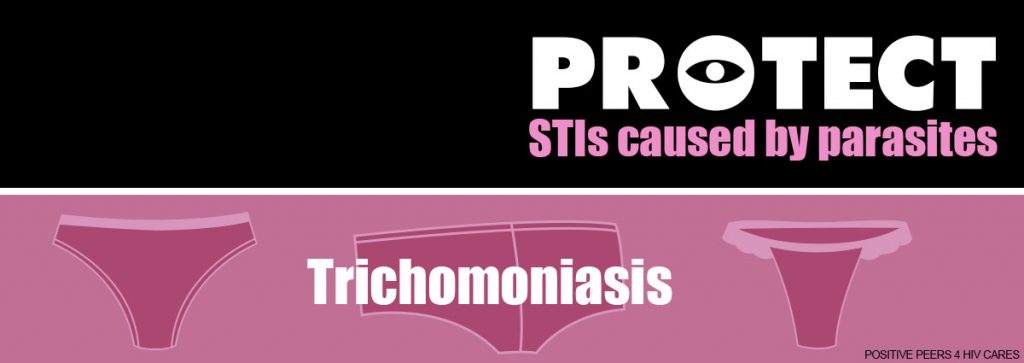
STIs caused by parasites
These little bugs can infest your skin down there. It’s possible to get them off your body, but they can come right back if you have sex with somebody else who is infested.
Trichomoniasis
The Centers for Disease Control and Prevention (CDC) call trichomoniasis the most common curable STI. Around 3.7 million people in the U.S. have the infection.
What causes it: Trichomonas vaginalis, a protozoan parasite.
How you get it: Sexual contact with the vagina and penis.
Symptoms: Mild irritation to severe inflammation (but 70% of the people who have it show no symptoms).
Treatment: Medications such as metronidazole or tinidazol.
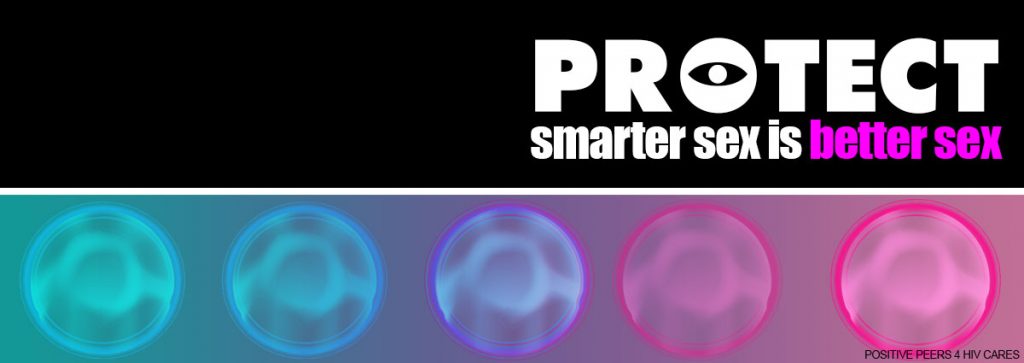
Some of the best ways to avoid STIs
The same precautions for HIV apply to other STIs:
- A condom or dental dam can help block viruses, bacteria, and parasites.
- We suggest disclosing your STIs to your partner so there are no surprises.
- Talk to your doc about getting vaccinated for STIs if a vaccine is available.
- It’s a great idea to get tested regularly even if you don’t have any symptoms.
- Maintaining good personal hygiene can help you avoid catching or spreading STIs that live on the skin or in the body hair.
- Monogamous relationships are a good way to make sure you and your partner stay healthy throughout your relationship.
Smarter sex is better sex
Moral of the story: Smarter sex is the best sex. STIs are no fun and can even be dangerous, but they aren’t something to be ashamed of. Since most people with an STI don’t experience symptoms, it’s a good idea to get tested on the reg and treat’ em right away if you got’ em.
Sex is supposed to be fun, and it will be. The best ways to keep it fun and sexy are open and honest conversations with partners and to use the tools and risk reduction methods that work best for you.
Related Blogs:

